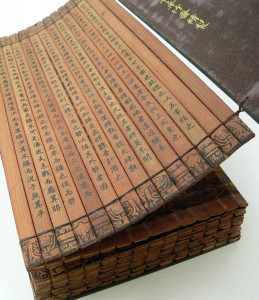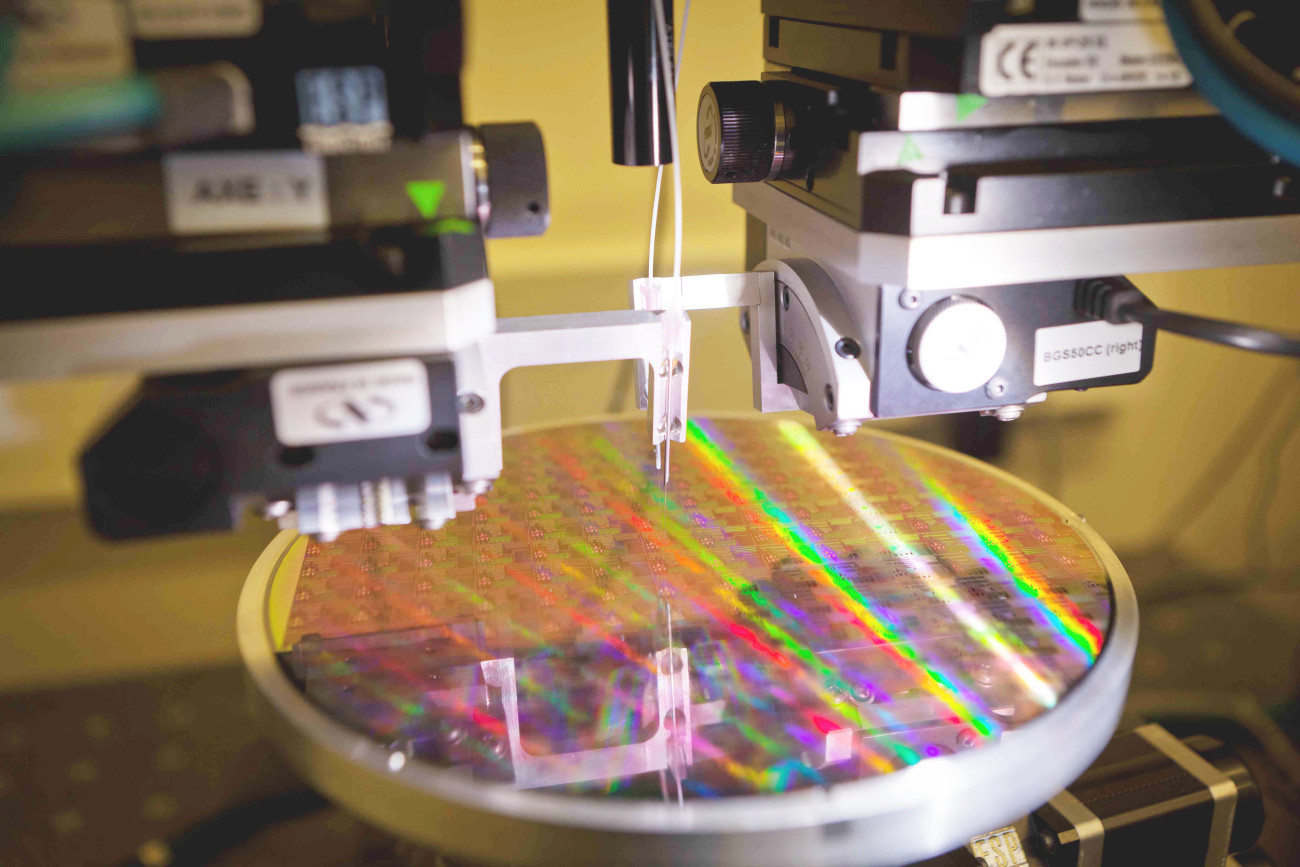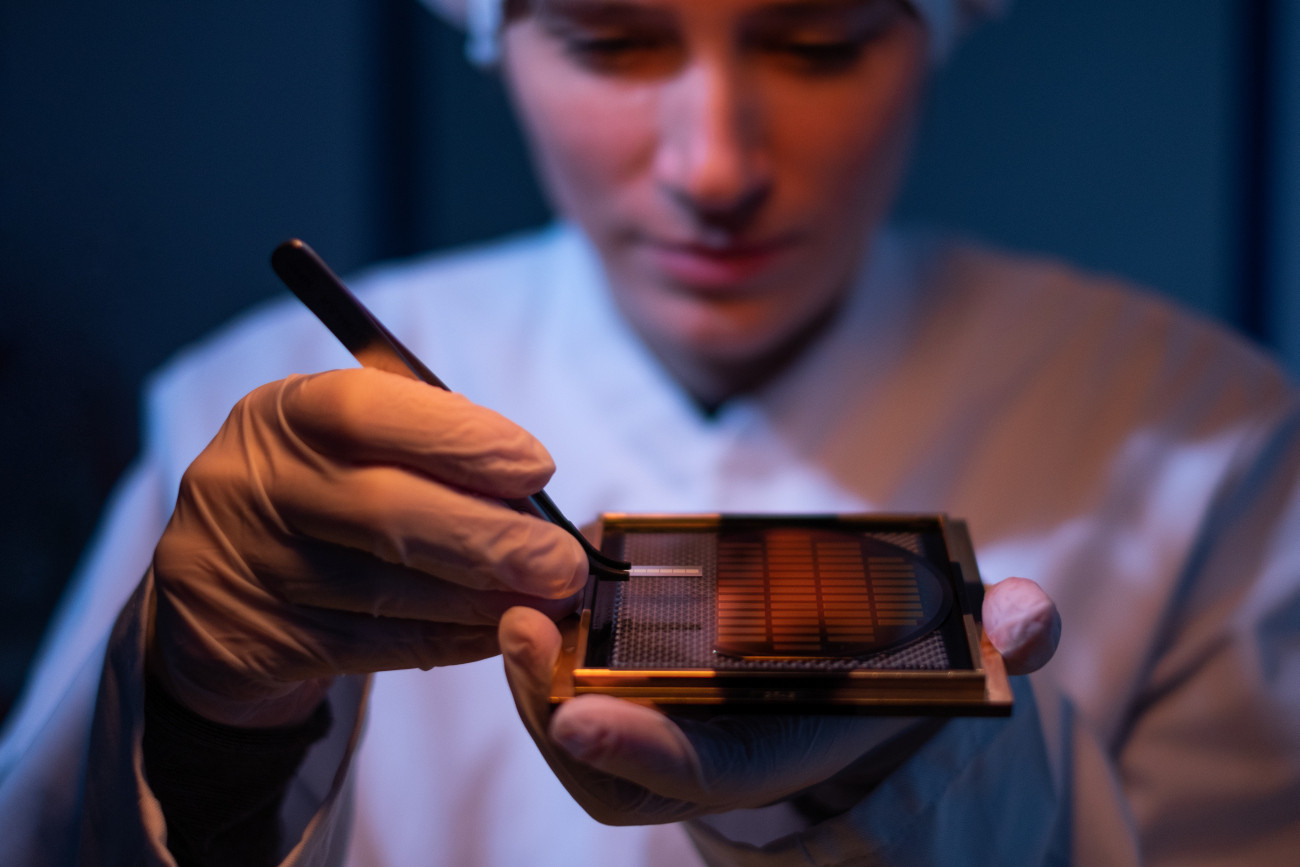This Roman comment on the rising of the sun ('The light comes from the east') was appropriated by the early Christians and applied to their savior. Due to its popularity, this phrase has undergone a number of other reinterpretations over the centuries and thousands of years, until it is finally used as a catchphrase in both the film industry and the tourism industry. However, not only founders of religions, poets and philosophers were and are fascinated by light - scientists from a wide range of disciplines are also intensely concerned with this phenomenon.
 Sun Tzu's advice is to overpower the enemy without fighting - in this case with photonic instead of electronic chips, for example...Since the mid-1980s, rumors have been circulating in the electronics industry that photonic circuits are far superior to silicon transistors. After initial fanfare, this research went almost silent until Western sanctions attacked both Russian and Chinese chip production and development.
Sun Tzu's advice is to overpower the enemy without fighting - in this case with photonic instead of electronic chips, for example...Since the mid-1980s, rumors have been circulating in the electronics industry that photonic circuits are far superior to silicon transistors. After initial fanfare, this research went almost silent until Western sanctions attacked both Russian and Chinese chip production and development.
With these questionable measures, politicians often forget to look at the culture of those countries, which, in contrast to short-term profit thinking, often plans for the long term. A tree that is immediately processed into wood can bring in 100 dollars ... or after twenty years a million through nature tourism. So perhaps the 'Chips and Science Act', which, among other things, provides around 52 billion dollars for new or expanded facilities for the production of semiconductors or chip manufacturing equipment, is the wrong approach if it is aimed at 'old' technologies.
While such cash injections are prompting companies to set up new manufacturing facilities, opinion is divided even among internal managers, such as those at TSMC's new US site in Phoenix. Not only does the Taiwanese government continue to encourage companies like TSMC to maintain the 'Silicon Shield', but they also assume that production costs in the US will be far higher than in other existing locations. They then see the effects in higher prices for the products and thus a loss of competitiveness.
In China, Sun Tzu's book is also being studied and its strategies applied to industry. So it is probably wrong to assume that industry there is engaged in a battle to catch up, as it is more likely - and this has already been proven in the past - that it is more interested in overtaking. After all, according to Sun Tzu's 'Art of War', the great art of war is 'to overpower the enemy without fighting' [2].
Where is the journey going?
This is where the light from the East comes in, because it seems that Chinese companies - instead of aiming for the 10 or 3 nm [3] in the silicon chip - are intensively looking at others and also at photonic switching. It is true that other possibilities are already being targeted, as evidenced by research into quantum computers, for example, or as some scientists at Harvard University have now demonstrated by building topological transistors that modulate sound instead of electrons. But here we can perhaps focus on light circuits.
 Wafer-scale optical tests of silicon photonic integrated circuits on a 200 mm silicon-on-insulator wafer after fabrication in a CMOS fabThetransistor was invented in December 1947, making it 75 years old. Since its invention in 1947, 13 Sx. [4] transistors have been produced to date [5].The questions of 'higher and further' also arise here ... and where is the journey going?
Wafer-scale optical tests of silicon photonic integrated circuits on a 200 mm silicon-on-insulator wafer after fabrication in a CMOS fabThetransistor was invented in December 1947, making it 75 years old. Since its invention in 1947, 13 Sx. [4] transistors have been produced to date [5].The questions of 'higher and further' also arise here ... and where is the journey going?
In somewhat hidden and cryptically worded articles, the cat is let out of the bag, and it seems that the big challenger Huawei, which is weighing heavily on the minds of US politicians, is playing a key role in this.
Today's cell phones use electronic chips, and this is likely to remain the case for a while, as photonic chips will need to evolve before they become as small as their electronic cousins. Photonic chips use silicon and silicon-based materials as optical media.
A light transistor (better known as an optical transistor or photonic transistor) works like a three-terminal switch, but with photons rather than electrons as the only inputs and outputs.
Unlike electronic chips, where the flow of electrons is conducted through electrical components such as resistors, coils, transistors and capacitors, photonic chips are completely different. Photons pass through optical components such as waveguides (equivalent to resistors), lasers (equivalent to transistors), polarizers and phase shifters.
In addition to enormous switching speeds, they offer further advantages, such as hardly any problems with heating, which is becoming increasingly difficult to address with electronic chips.
At present, it is foreseeable that photonic chips will not be used in mobile phones, but are more likely to prove their usefulness in data centers and base stations for 5G technology due to their size alone. There is space and many opportunities to save electricity.
Servers suck an enormous amount of energy from the power grid, whereby it is often overlooked that the majority of consumption is wasted, so to speak, due to the absolutely necessary cooling. No heating would mean that the cooling could be switched off.
A recently filed patent concerns a photonic chip with an orbital rotary pulse waveguide - it was manufactured in China. With a current computing power ten times higher than current electronic chips, the power consumption is 1% of that required for electronic chips. This means that heat dissipation is largely unnecessary.
We can now look forward to further developments.
 A Q.ANT engineer prepares a photonic chip for the next stage of work
A Q.ANT engineer prepares a photonic chip for the next stage of work
About the person
Prof. Rahn is a globally active consultant in connection technology. His book on 'Special Reflow Processes' was published by Leuze Verlag. He can be contacted at
References
[1] 'Light comes from the East', (Latin proverb)
[2] Found at: https://www.myzitate.de/sun-tzu/
[3] Pablo Valerio: 'Taiwan Already Has 3-nm Chips'; 9.1.2023, epsnews.com/2023/01/09/taiwan-already-has-3-nm-chips-why-the-u-s-lags/ (Retrieved: 18.7.2023)
[4] Sextillions - a number equal to 1 followed by 21 zeros
[5] www.waferworld.com/post/how-many-transistors-are-there-in-the-world
Image rights
ePIXfab / Ghent University: www.epixfab.eu
Q.ANT: www.qant.de

![Column: Ex oriente lux [1]](/images/2024/03/20/0482fc77902d0b4c9a449d5d1e0345a8_large.jpg)
